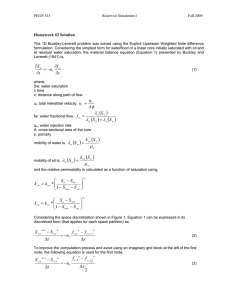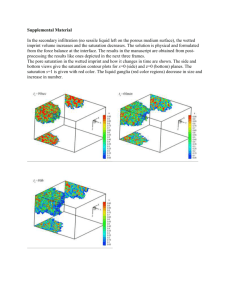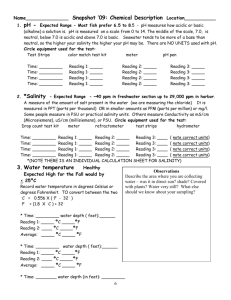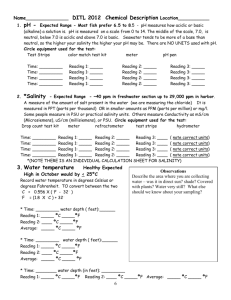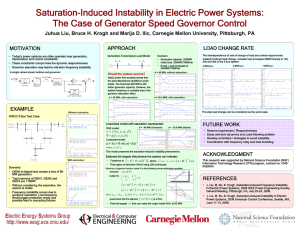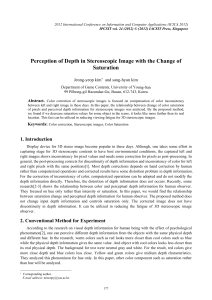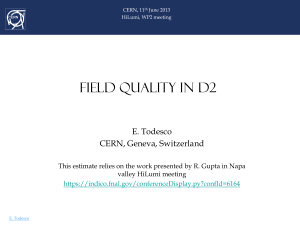Estimation of Oil Saturation Using Neural Network
advertisement
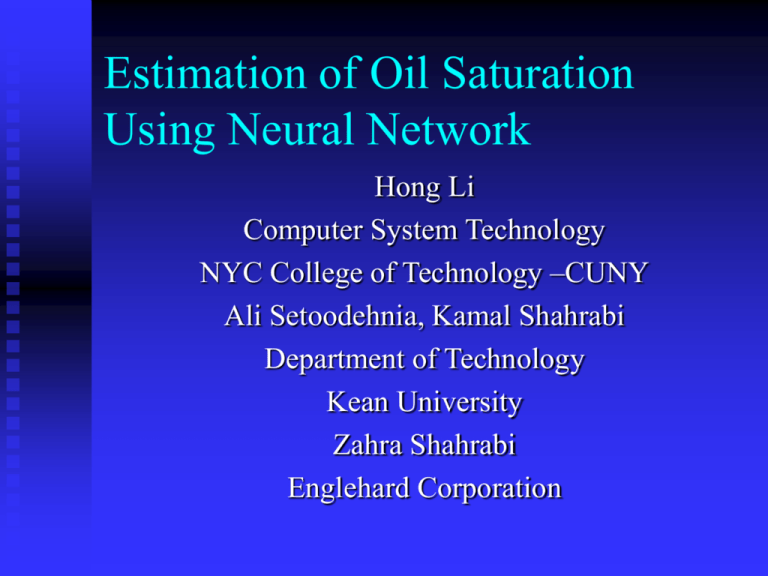
Estimation of Oil Saturation
Using Neural Network
Hong Li
Computer System Technology
NYC College of Technology –CUNY
Ali Setoodehnia, Kamal Shahrabi
Department of Technology
Kean University
Zahra Shahrabi
Englehard Corporation
Introduction
Estimate oil saturation has been an
important issue for petroleum engineers
Engineers attempt to determine parameters
that produce the best match with
observation
Fitting functions
Artificial neural network
Numerical Method
Authors previous work: modified Newton Method
in parameter estimation using Leverett J function
J function value is determined by capillary
pressure
Suppose that saturation S is function of Leverett J
value
Determine parameters in fitting function
describing relation between saturation and J value
Fitting Functions
1.
2.
3.
4.
5.
Benson-Anli fitting function
S = exp{ (1-J)/a} for J >= 1, where a is
unknown parameter
Brooks-Corey fitting function
Thoneer fitting function
O’Meara Unimodel
O’Meara Bimodel
Minimization problem
The determination of parameters is a
nonlinear least square minimization
problem
Attempt to determine (An) in fitting
function that produce the best match with
observation in the sense that minimizes an
objective function
E( ) = Σ ( Sm – S )^2
Modified Newton Method
A numerical method generally consists of three
steps
1.
Choose a starting point
2.
Designate a way to generate a search
sequence, a0, a1, a2, … so that E(ak+1)<
E(ak)
3.
Stipulate a convergence criterion
Modified Newton method is a decent algorithm
that ensure the objective function always
decrease at each step.
Local minimum might occur
Artificial Neural Network
Artificial neural network has been applied in different
fields for modeling dynamic system
Feedforward multilayer perceptron with backpropagation
learning rule has been successfully used to model
nonlinear static systems, where the behavior of the system
is not function of time.
Backpropagation Algorithm
In FMP, input patterns are fed into
multilayer and propagated forward to the
output layer. The output is compared with a
measured output
BPA is a generalized least square algorithm
that minimizes the mean Square Error
ΔW = - μ əE / əW, where μ is learning rate
Problem formulation
Output : Saturation
Inputs: underground pressure, permeability,
location indicator, and rock type indicator
are major inputs that affect saturation value.
Nodes in hidden layers: try and error
between 1 – 10
Simulation
Data including permeability, pressure, elevation,
and type indicator and saturation are collected
from field.
50 patterns of actual saturation and estimated
saturation.
With the learning rate of 0.1, slop of 0.2 and
momentum of 0.2, the neural network was
selected with two hidden layers and each layer has
five and three nodes respectively
50 patterns training
Estimation of Saturation
using ANN
0.6
Actual
0.4
Estimated
0.2
patterns
49
43
37
31
25
19
13
7
0
1
Saturation
0.8
Thank you!

